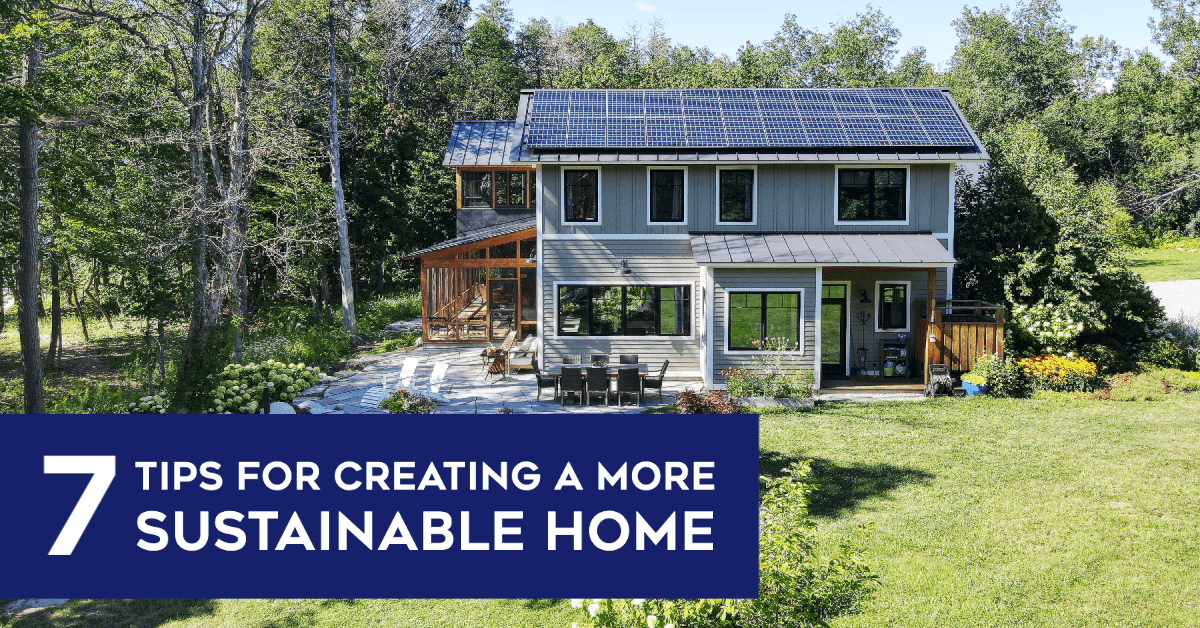Staring at a recycling bin overflowing with plastic cups and water bottles from your last party? Are you tired of throwing away old shoes and clothes or replacing batteries and light bulbs? If you want to help the earth but need help knowing where to start, a more sustainable home is the answer!
Sustainable living can sound daunting, but it doesn’t have to be. Read on to discover sustainable living tips for when you’re ready to take the next step in creating a more sustainable home.
Contents
1. Reduce Waste and Reuse Materials
First, separate your garbage from recyclables, biodegradables, non-recyclables, and hazardous waste. Then, look into what local programs are available for sustainably sorting and disposing of each type of waste.
Look for materials that can be upcycled or repurposed and find creative new uses. Consider hosting a swap night with friends, family, or neighbors with items that are no longer useful to you but could benefit others.
Finally, look into local thrift stores and online classifieds to find gently used items that you may otherwise have purchased new. These tips can help you reduce the waste you dispose of daily. And it can make your home more sustainable.
2. Employ Water Conservation Strategies
Using water-efficient fixtures is an excellent way to reduce the daily water used in your home. These fixtures include low-flow faucets, showerheads, and toilets.
You can also take simple steps. For example, you can only run the dishwasher and washing machine when they’re full to conserve more.
Collecting rainwater and greywater for irrigation and other non-consumption uses is also a great option. You can also install timers on your outside faucets, hoses, and sprinklers to prevent overwatering.
Another water conservation strategy is keeping a pitcher of cold water in the refrigerator. Doing this instead of running the tap for each glass and turning off the tap during brushing can help reduce water usage in your home.
3. Turn Off Appliances When Not in Use
You can apply this tip to all appliances. It includes plugged-in TVs, computers, laptop chargers, and other small home appliances. Unplugging them when not in use is necessary to reduce electricity wastage.
Remember the importance of turning off the lights too when leaving a room. Powering down is a great way to reduce energy bills and save money in the long run.
4. Invest In Eco-Friendly Appliances
Investing in eco-friendly appliances is one of the best ways to create a more sustainable home. Not only do they use less energy and water, they often last longer than traditional appliances. So they are also a cost-saving investment.
When shopping for new appliances, look closely at energy star ratings. This system by the US Environmental Protection Agency identifies energy-efficient products.
Additionally, look for appliances with insulation and tight-sealing doors to preserve heat or cold. Consider systems that produce hot water. It can come in tankless systems or a hot water recirculation loop that delivers hot water on demand.
5. Utilize Renewable Energy Sources
Using renewable energy sources is essential to creating a more sustainable home. It might include installing solar panels from this solar company and or putting up a wind turbine to generate electricity in an environmentally-friendly way. Not only will this reduce your utility expenses, but it will also contribute to using fewer resources from fossil fuels.
Placing solar panels in an area of your home that directly faces the sun will maximize the energy produced. A system with an inverter to store solar energy is also a good option.
Wind turbines should be placed in an area with consistent winds. Just research any local restrictions for building a wind turbine in your area.
Utilizing renewable energy sources is good for the environment. It can be a significant financial investment in the long term as you become more independent from the power grid. And it also reduces your carbon footprint by quite a lot.
6. Start Composting
One of the easiest and most effective ways to create a more sustainable home is to start composting. With this easy task, you can create fertilizer for your garden and cut down on landfill waste.
You need a few essential items, such as a composter, soil, and kitchen scraps. Begin collecting the kitchen waste into a compost bucket, like fruit and vegetable scraps and eggshells. Then, transfer the scraps into the composter and add a layer of soil between each layer of waste.
Make sure to aerate the compost pile to ensure oxygen reaches the soil, and moisten it occasionally with water. The compost pile can take 6-12 weeks to decompose, at which point you will have nutrient-rich soil to use as a natural fertilizer.
7. Integrate Greenery Into Your Home Environment
Plants offer a bevy of environmental benefits. They help purify the air, keeping it fresh and healthy, and they can also reduce sound levels.
So consider placing plants in areas with ample natural light, such as near windows and balconies. Then, choose hardy varieties native to your site and suited to the desired environment. That way, they will only need a little attention or water.
Consider investing in an indoor hydroponic garden to take it to the next level. It can take up less space and use 90% less water than traditional plants. You can put much less office through this garden but still benefit from integrating greenery into your home.
Work Your Way Towards Creating a Sustainable Home
These are just some ways to create a more sustainable home. We can reduce the environmental impact on our homes by taking action and making small changes in our daily routines. From switching to energy-efficient products to reducing waste, our homes can be a model for a more sustainable lifestyle.
So let’s get to work!
Did you find this article helpful? If so, check out the rest of our site for more now.

